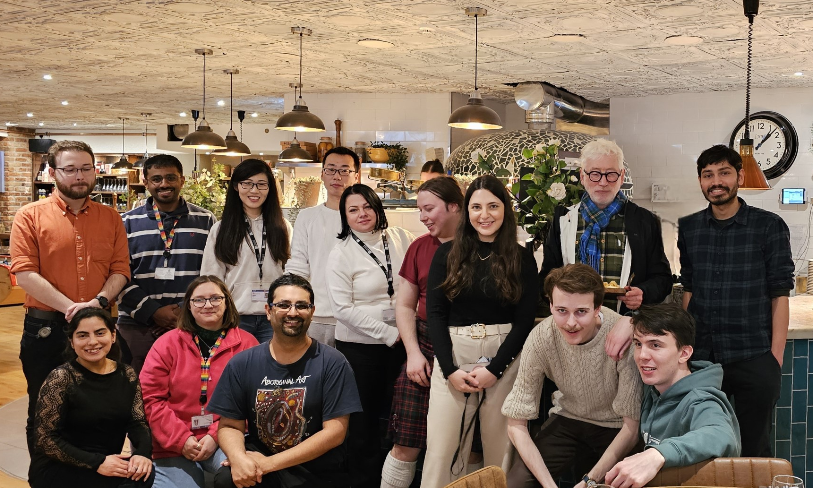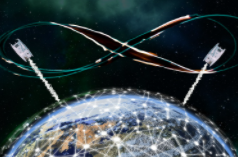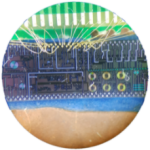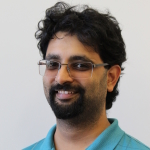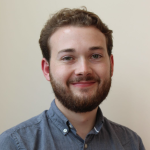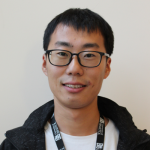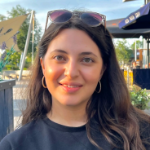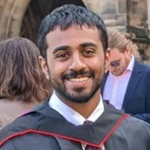Joshi Group
-
Dr Siddarth Joshi
Lecturer in Optical Communications
Siddarth Koduru Joshi completed his PhD in the group of Christian Kurtsiefer in CQT, Singapore on loop hole free Bell test experiments (a way to prove the fundamental principles of quantum entanglement). He then joined the group of Rupert Ursin in IQOQI-Vienna for a post-doc and then joined the University of Bristol as a Senior Research Associate. After multiple rapid promotions, he started as a Lecturer of Optical Communications in 2021. When he is not in the Lab, meetings, or checking email, he is an avid gamer (computer and board), reader and traveler.
Research interests and activities
When you send a message, your personal data, bank transfers, medical records, and so much more over the internet, you want them to remain private. To do this communication is encrypted. But the best encryption you currently use can eventually be broken by powerful computers. I work on quantum communication – an encryption technique that is based on immutable and fundamental laws of physics to ensure that malicious decryption is impossible no matter how powerful a computer a hacker uses.
My focus is to bring these technologies out of the lab and into the real world. To this end I am working on building small satellites (small enough to hold in your hand) for global scale quantum communication, long distance fibre optic based quantum communication for terrestrial links and many user large and complex quantum networks to create the quantum internet.
I also work on quantum metrology (the science of measurements) and use the fascinating properties of quantum physics to make measurements more precise or even to be able to take images at one wavelength without ever detecting light at that wavelength.
Satellite based QKD
Quantum Key Distribution (QKD) is limited by transmission loss. This limits a secure QKD link to a few hundred kilometres of optical fibre. After which we need to either use trusted nodes to relay the message (a compromise on security) or use quantum repeaters (a technology still in its infancy). Interestingly, the optical loss in sending quantum signals from a satellite to the ground is much smaller than very long lengths of optical fibre. Thus satellites provide a viable solution for global scale quantum communication. Together with our industrial partners -- Craft Prospect and academic collaborators in the University of Strathclyde, we are building a launching a commercially viable 6U QKD satellite based on polarisation encoded Decoy State Protocol. Further, as part of the UK National Quantum Technologies Programme's Quantum Communication Hub, we are developing an improved prototype of a quantum transmitter which will be one of two quantum systems tested in the QuaRC mission. To complement our ongoing satellite efforts, we are developing a low cost mobile optical ground station (OGS) compatible with several international quantum communication satellite efforts. The mobile OGS will be used to identify sites suitable for linking satellites into the UK wide quantum network which is under construction.
Quantum Networks
Quantum communication is secure because of a fundamental law of physics which states that it is impossible to make an exact copy of an unknown quantum state. Which means that any one trying to intercept the secret key will introduce errors and be found out. Ironically, it is this same law that makes building a quantum network so difficult. Modern telecommunications are made possible by amplification, duplication and routing of signals along multiple paths. None of which are viable with quantum communication. Thus building the quantum internet is a whole new challenge. Our approach is two fold. First, we are using the unusual properties of quantum entanglement to create ever larger and scalable networks. In a recent experiment we connected 8 users across the city of Bristol in an entanglement distribution network in a first of its kind demonstration. Entanglement is also the work-horse of several other quantum technologies like quantum computers and quantum sensors. Thus we are making our entanglement networks future ready for all sorts of quantum devices. Our second approach to qauntum communication networks is to integrate commercial systems and test their interoperability in real world usage scenarios. We interconnect "prepare and send" based quantum communication systems together using the trusted node concept, to create complex networks that can form the backbone of UK's quantum network infrastructure. This work is being done in collaboration with the high performance networks group in the University of Bristol, several international collaborators and the Quantum Communications Hub
Quantum Information Protocols
The internet is so much more than many computers connected to the WiFi, similarly the quantum networks we are building have a lot of additional complexity. We develop and experimentally implement algorithms and protocols which optimise network resource utilisation, help in the commissioning phase of the network, and try to tackle problems like the establishment of the initial secret key needed for authentication. Further, we believe in ensuring that our networks are not limited to key distribution. To this end, we work in close collaboration with many other groups to implement a variety of protocols on our quantum networks. These include anonymous broadcasting/messaging and Quantum secure Digital Signatures. We are continuously on the look out for new collaborations to make the best possible use of our quantum network test-bed
Chip Scale Quantum Technologies
Integrated photonics is an excellent way to miniaturise complex quantum systems. Currently we are working to implement a Flood-light QKD protocol which offers considerable speed advantages (i.e. high key rates) in medium length communication links
Metrology
Together with the group of Jonathan Matthews, we have been able to combine our expertise in building high efficiency sources of entanglement as well as rugged and portable optical setups to perform a variety of quantum metrology experiments. For example, the sub-Shot noise measurement (being subjected to a simple shake test in the above picture) allows us to measure the transmission of a sample with a precision unachievable by classical techniques of similar brightness. Our compact quantum sources are also used for single photon LiDAR systems.
 Major research topics
Major research topics
- Satellite-based QKD
- Quantum information protocols
- Chip scale quantum technologies
- Quantum networks
- Metrology
Current postdocs and research fellows
-
Marcus Clark
Research Associate
-
Peide Zhang
Research Associate
Current PhD students
- Hobbs Willett
-
Jaya Sagar
(Also with John Rarity)
- Sanna Al-Abdally
- Nathan Moses
Active grants
Previous grants
Recent publications
- Pelet, et al. "Unconditionally secure digital signatures implemented in an 8-user quantum network." arXiv preprint arXiv:2202.04641 (2022).
- Tessinari, et al. "Towards Co-Existence of 100 Gbps Classical Channel Within a WDM Quantum Entanglement Network." 2021 Optical Fiber Communications Conference and Exhibition (OFC). IEEE, (2021).
- Wang, et al. AI-Enabled Large-Scale Entanglement Distribution Quantum Networks." Optical Fiber Communication Conference. Optical Society of America, (2021).
- Sidhu, et al. "Advances in space quantum communications." IET Quantum Communication 2.4 (2021).
- Solomons, et al. "Scalable authentication and optimal flooding in a quantum network." arXiv preprint arXiv:2101.12225 (2021).
- Huang et al. "Experimental implementation of secure anonymous protocols on an eight-user quantum network." arXiv preprint arXiv:2011.09480 (2020).
- Joshi, et al. "A trusted node–free eight-user metropolitan quantum communication network." Science advances 6.36 (2020).
- Allen, et al. "Approaching the quantum limit of precision in absorbance estimation using classical resources." Physical Review Research 2.3 (2020).
- Mazzarella et al. "Quarc: Quantum research cubesat—a constellation for quantum communication." Cryptography 4.1 (2020).
- Wengerowsky et al. "An entanglement-based wavelength-multiplexed quantum communication network." Nature 564.7735 (2018).
Join us
We are always on the look out for talented individuals. We will soon have a fully funded PhD studentship for UK residents.
Please contact me if you are interested in a post-doc position and want to apply for funding together to make this happen.
Above positions will appear on our opportunities page when available.
Ongoing Collaborations
We have many collaborations and are always looking for more. I believe in bringing individual quantum devices together to create complex and amazing systems. These systems then become the ideal proving ground for a wide variety of protocols.
Within the university we work closely with the High Performance Networking group to adapt the state-of-the-art classical networking technology into our quantum networks. We collaborate with other research groups within QET Labs and Photonics and Quantum research group. Our collaboration forms a bridge between the quantum communication and quantum imaging hubs. Nationally we collaborate with the Universities of Strathclyde, York, Heriot-Watt, Cambridge, Oxford, Sheffield, Sussex and Leeds, as well as RAL space, UK Space Agency, Fraunhofer, Craft Prospect, Air Bus, ID Quantique, KETS quantum, QLM, and others.
We also have strong international collaborations with the National University of Singapore, IQOQI-Vienna, Austria, RBI-Zagreb, Croatia, Sorbonne University, Paris, France, NUDT, Changsha, China, University of Waterloo, Canada, etc. Please do get in touch if you want to collaborate.
Commercialisation of Quantum Technologies
We believe in translating research to commercial every day technologies. We work closely with multiple companies and start-ups on industry led research projects. I often consult for companies interested in quantum communication and have helped design products that are now on market.
